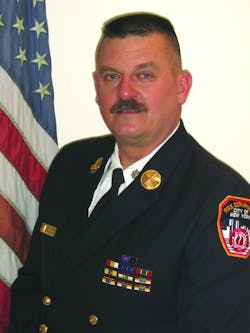The Fire Scene: Practicing Mayday Procedures
The proper use of established mayday procedures is a vital skill that every member of a fire department needs to master—and not just firefighters and company officers but also every chief officer who may find themselves at the command post during a serious operation. With this in mind, let’s look at mayday procedures and mayday training.
Procedures and training
Mayday procedures are probably the least utilized of all fire tactics and operations. And because they are so infrequently used, there is always a need for constant and realistic training. Mayday operations are not simply transmitting a mayday and deploying a rapid-intervention team (RIT). There is much more to a fully functional and effective mayday procedure, covered by a variety of questions:
- How and when do you transmit a mayday?
- Who answers or acknowledges a mayday?
- What specific information is transmitted?
- Does the incident commander (IC) ask additional questions of the mayday firefighter?
- What RIT resources are assembled prior to a mayday?
- When is the RIT deployed?
- Can the RIT perform other fire scene tasks while standing by?
Let’s assume that your department has completed a mayday/RIT policy and they are ready to start the training. What type of training is required and what members of the department need to be trained? Some departments train a specific group of firefighters or the members of selected units for RIT operations. This usually results in many firefighters and officers who are not properly RIT trained. Mayday training, on the other hand, is required for all firefighters and officers, and should not exclude anyone.
When it comes to mayday training, this is not classroom-only training. Mayday training that has any value will be hands-on training (HOT). HOT means that each and every firefighter needs to be trained to think through, properly transmit and follow up on actual high-stress, high-hazard events. Departments must invest in training props and equipment that will allow firefighters to actually become distressed while training. Of course, we should eliminate the actual physical hazards, but the firefighters should experience distress, difficulty and physical discomfort. The obvious reason for this is that we want to recreate the conditions that they will be experiencing for proper mayday performance under those conditions. You’ve probably seen magazine articles and HOT evolutions at conferences display props that use hatch doors and drop floors that propel the firefighter into a large bin of plastic balls, thereby creating a sensation of collapse or disorientation. Those and other scenarios are the types of training required for proper mayday transmission preparation.
Another element of mayday training that I have not seen much of is the training for the IC at the receiving end of a mayday transmission. Yes, the firefighter needs to experience distress, difficulty and discomfort, but the IC will also be thrust into a difficult and challenging moment when they receive or acknowledge a mayday message.
Training for the IC should concentrate primarily on radio procedures. The actual command board, radio and any other associated equipment and personnel should be assembled for this training. First, the existing fireground radio transmissions need to be underway with several units reporting search results and difficulties, hoseline advancement reports and victims being found. The mayday should blast onto the scene unexpectedly and loudly. The IC will need to be able to take control of the mayday quickly and simultaneously handle or transfer the fireground traffic to a subordinate chief. The maydays the IC receives should come in several formats. Some should sound just as the firefighters were taught following the department policy on wording, etc. Others should be a firefighter screaming for help without providing the proper info. This will test the ability of the IC to handle situations that do not conform to the established procedures. Add to that a firefighter who is panicking and not pausing or allowing the IC to ask any questions as well as another firefighter who simply transmits a mayday and never speaks again.
In sum
As you can see, mayday training is required for all of us at both ends of the event. Solid and effective training for firefighters and chief officers will increase your chances of conducting a successful mayday/RIT operation at your next fire.
About the Author
John J. Salka Jr.
Battalion Chief
JOHN J. SALKA JR., who is a Firehouse contributing editor, retired as a battalion chief with FDNY, serving as commander of the 18th battalion in the Bronx. Salka has instructed at several FDNY training programs, including the department’s Probationary Firefighters School, Captains Management Program and Battalion Chiefs Command Course. He conducts training programs at national and local conferences and has been recognized for his firefighter survival course, “Get Out Alive.” Salka co-authored the FDNY Engine Company Operations manual and wrote the book "First In, Last Out–Leadership Lessons From the New York Fire Department." He also operates Fire Command Training, which is a New York-based fire service training and consulting firm.

